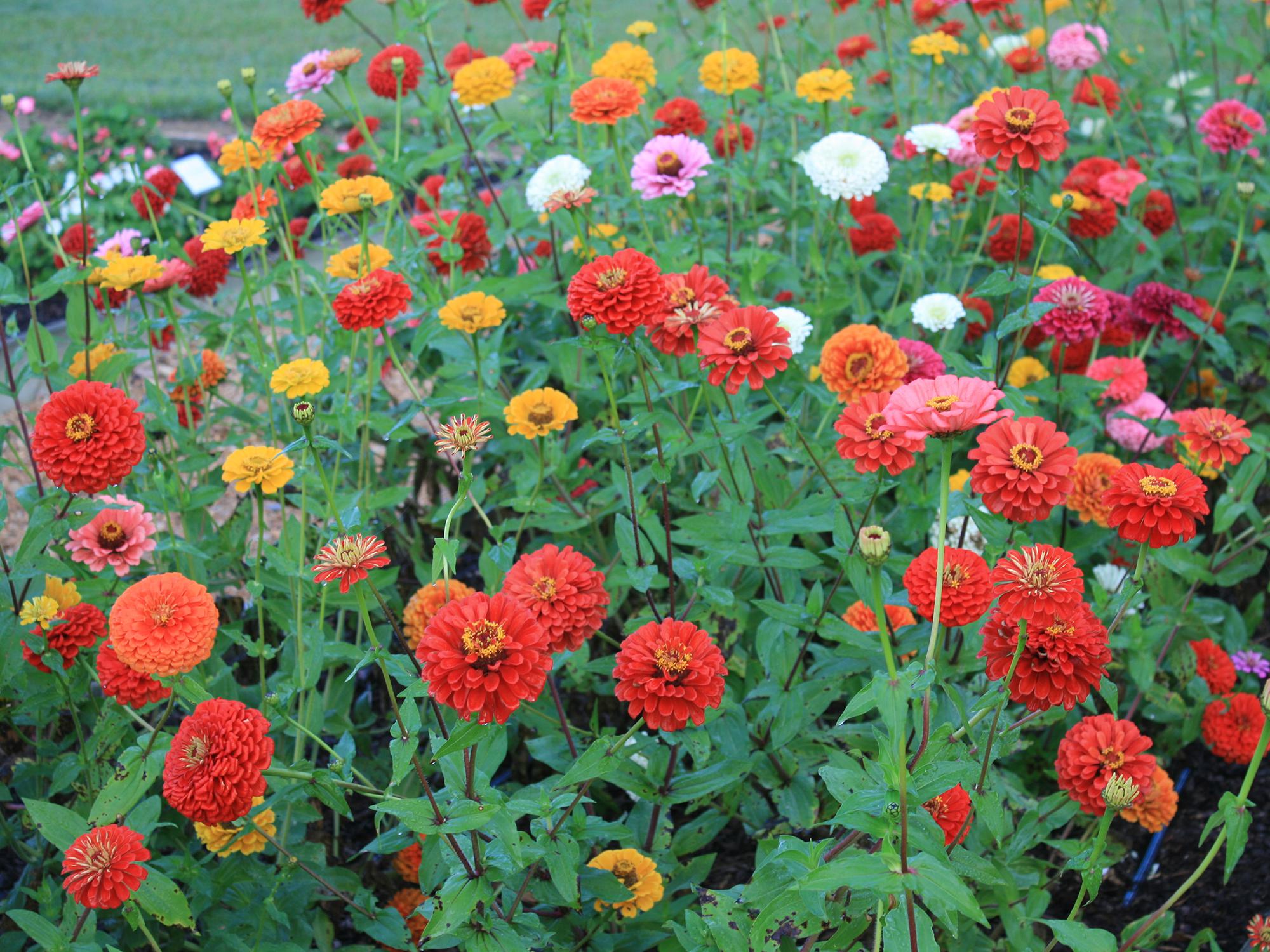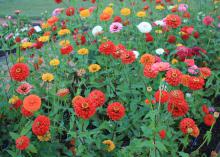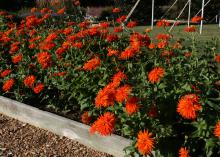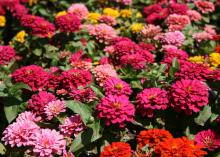Information Possibly Outdated
The information presented on this page was originally released on July 23, 2018. It may not be outdated, but please search our site for more current information. If you plan to quote or reference this information in a publication, please check with the Extension specialist or author before proceeding.
Zinnias are terrific cut flower options
Because of the oppressive heat and humidity in my coastal landscape and garden, I spent the weekend in the air conditioning, of course.
While getting ready to speak at the Cut Flower Growing Workshop in Ocean Springs, I realized that I don’t think there’s a nicer activity than growing your own flowers for indoor use. I wish I had planned better and grown more flowering plants in my garden instead of all those darn tomatoes and peppers taking up the growing space.
The good thing about planning a garden is there’s always next year to change things up. So, as I thought about the flowers that can be used indoors and also are pretty easy to grow, the best match I came up with is the zinnia.
The classic cutting garden zinnia is Zinnia elegans, and boy do these live up to that name in a vase. These are the old-timey, pom-pom zinnias that I’m sure nearly everyone’s grandmother grew. They come in lots of colors and attractive flower shapes. I’m really fond of the cactus-flowered zinnia after seeing them growing in trial gardens at the Mississippi State University Truck Crops Branch Station in Crystal Springs.
Two varieties that I heartily recommend are the Benary Giants and Magellan selections.
Benary Giant zinnia is a must for any home gardener who wants long-lasting cut flowers that bloom all summer. These plants are perfect as the background in summer flowerbeds, as they grow to 30 inches tall. The tall and sturdy stems support an abundant yield of beautiful flowers. The huge double flowers routinely reach 3-4 inches in diameter.
These gorgeous flowers are available as single colors or in a stunning mixture of pink, coral, white, salmon rose, golden yellow, golden orange, dark red and dark lavender. Benary Giants tolerate the high temperatures and humidity of Mississippi summers. As a bonus, they have a lower vulnerability to powdery mildew, which can be a problem with other Zinnia elegans.
Magellan zinnias, shorter and stockier than some of the Benary’s Giant zinnias, have a mature height of about 18 inches.
Because of the shorter, thicker stems, these plants don’t require staking even though the flowers are enormous. The flowers resemble pompoms and are available in single and mixed colors. I like mass planting the mixtures, as they look like a colorful carnival in the landscape.
Zinnia elegans such as Magellan and Benary’s Giant benefit from deadheading the fading flowers. But since these are great cut flowers, you won’t have to deadhead because the flowers will never get to that point in the garden.
All Zinnia elegans actually require very little ongoing maintenance during the season.
Proper fertilization is critical to maintaining the gorgeous flowers. Keep constant levels of nutrition with monthly applications of a slow-release fertilizer, or use a water-soluble fertilizer biweekly.
Maintain a 2- to 3-inch layer of mulch to hold moisture and cool the soil. Zinnias tolerate droughty weather, but the flower production is reduced, so supply supplemental irrigation during these times. Soaker hoses or other forms of drip irrigation are useful during the summer and help keep the water bill down.
These zinnia selections have great vase life and can still look good seven days after cutting.
When collecting these flowers for vase use, always cut early in the morning and select flowers that are not quite fully open. They will continue to open once in the vase. Always have a small bucket of water with you when collecting these flowers. As soon as you cut the stem with sharp scissors or a knife, place the stem in the water. Add a product that extends cut flower’s life to the collection bucket to help keep the flowers fresh.
Cutting zinnias from your garden is one way to enjoy the outdoors while staying cool indoors during the oppressive summer.





